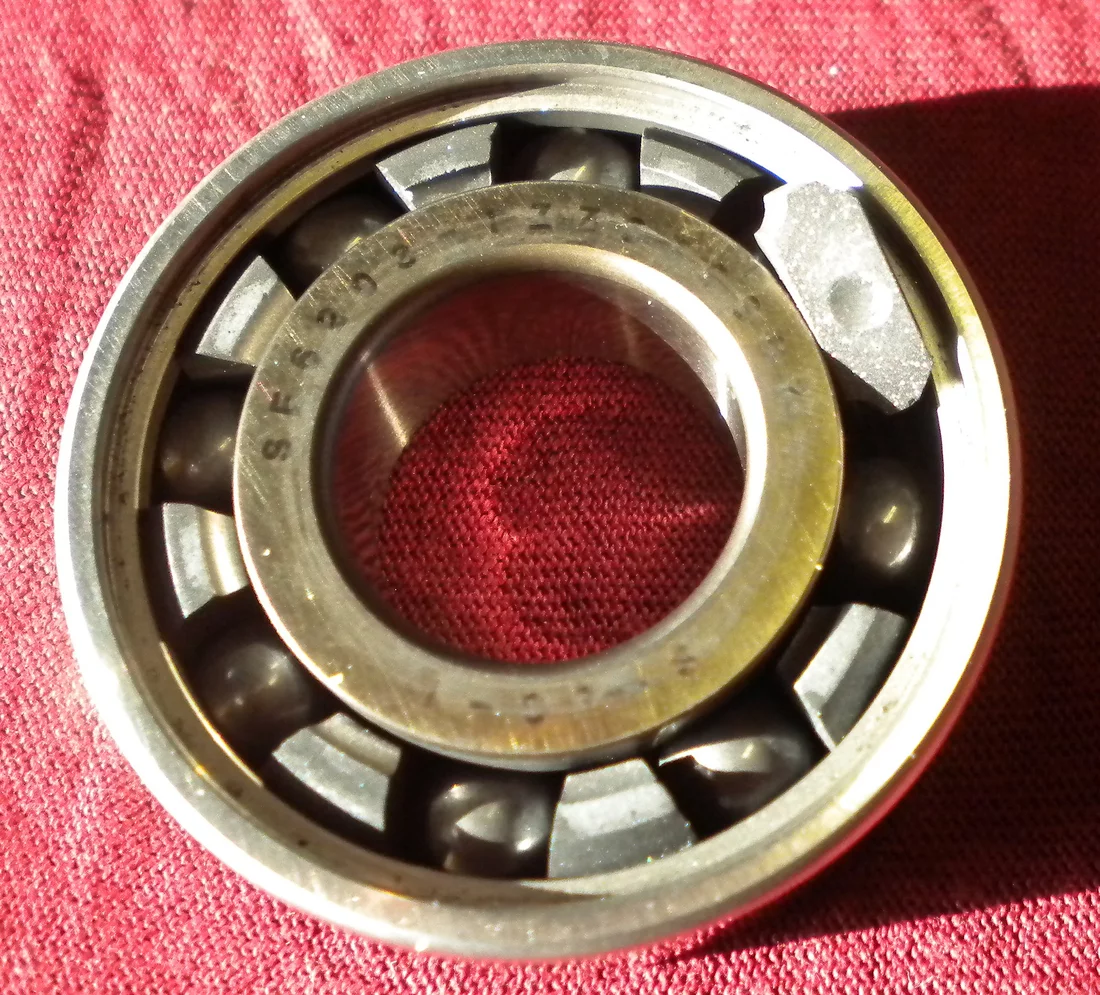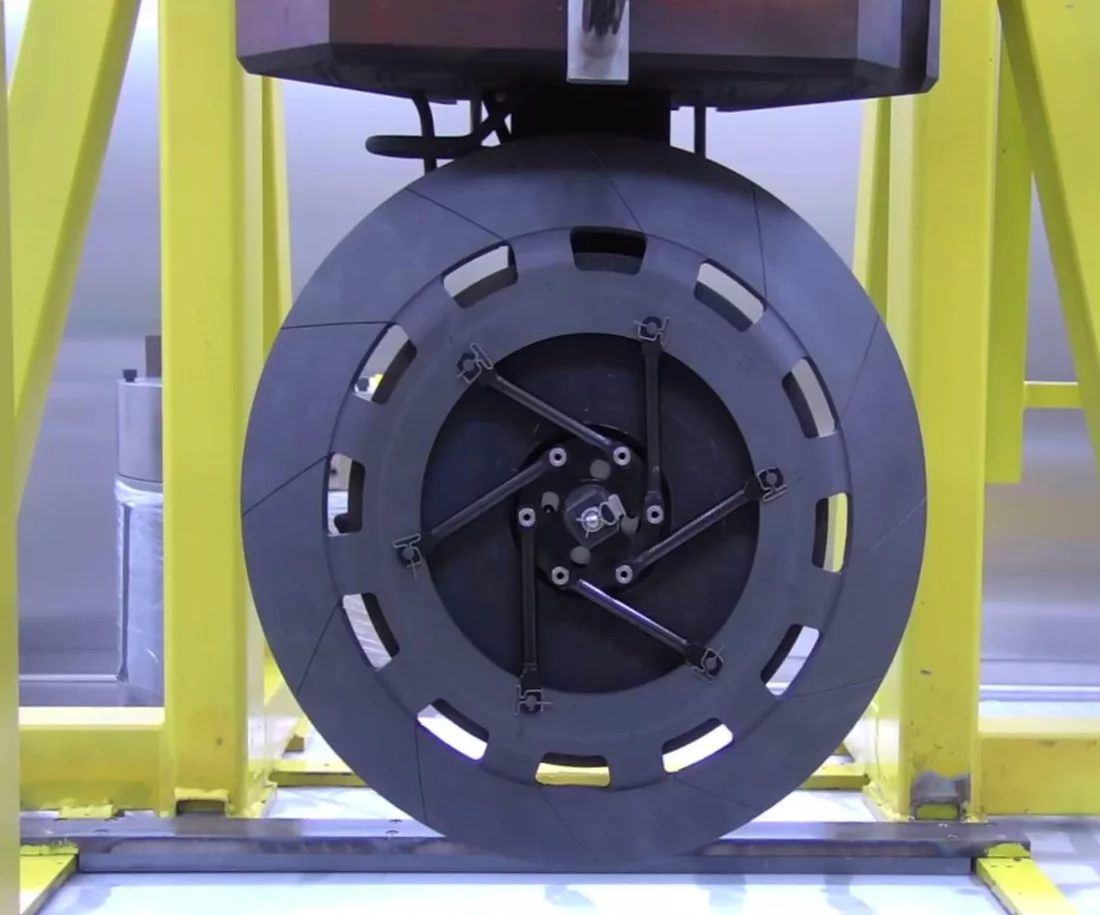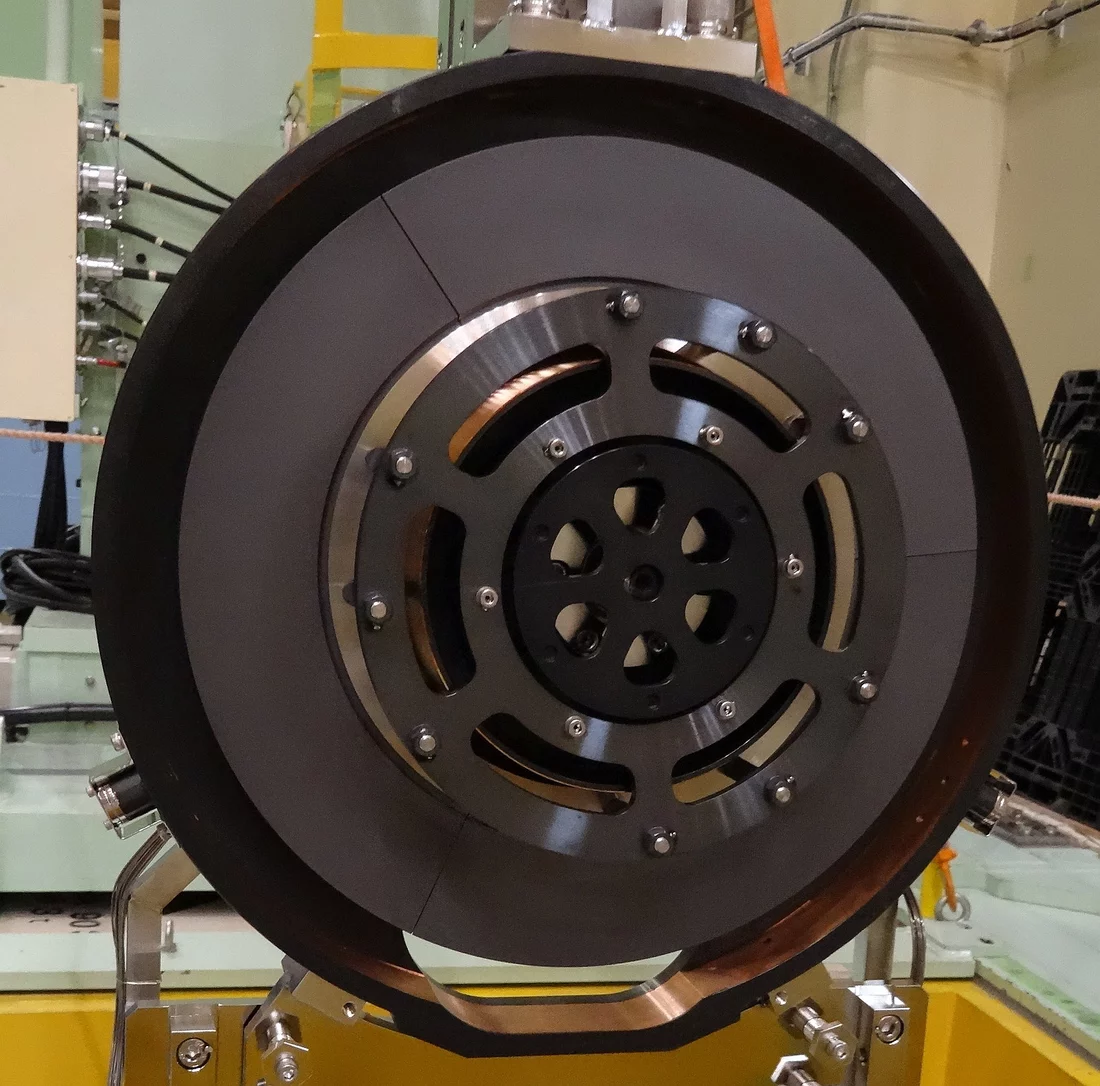The components in PSI's particle accelerators have to withstand harsh conditions. For two so-called targets, the staff of the Large Research Facilities division were looking for ball bearings that could cope without a classic lubricant and still run for a long time. They finally found what they were looking for. The first newly installed ball bearing ran extremely reliably in 2021: a great backdrop for the next operating period at the meson production facility at the HIPA proton accelerator, which started again on 2 May 2022 for external researchers.
Some engineering feats take time - and a good collaboration. Researchers from the Paul Scherrer Institute and the Japan Proton Accelerator Research Complex (J-PARC) have been working together for around 20 years to optimise their respective meson production facilities. Mesons are short-lived subatomic particles. At both J-PARC and PSI, mesons are produced by firing accelerated protons at so-called targets made of graphite. The mesons that are produced are pions, which soon decay into muons. At PSI, these particles are used in two ways. At the Swiss Research Infrastructure for Particle Physics CHRISP, researchers measure the properties of the muons, for example, in order to scrutinise the Standard Model of particle physics. At the Swiss muon source SμS, on the other hand, several particle beam lines are used for materials research. Here, samples are brought into the particle beam for examination, much like an object is placed under a microscope.
In this process, a graphite target, which plays such a decisive role in the creation of mesons, is exposed to extreme conditions. The constant bombardment with protons, which hit the graphite atoms at 79 percent of the speed of light, locally heats up the material. "In order to prevent damage to the target, we have to make sure that the protons constantly hit a new spot in the graphite and that the previously bombarded part can cool down again in the meantime," explains Daniela Kiselev, head of the Accelerator Operation and Development department in the Large Research Facilities division. The idea is very simple: instead of a fixed target, both PSI and J-PARC use a graphite disc in the form of a wheel that spins at 60 revolutions per minute, with the protons hitting its rim. As a result of its successful development and implementation at PSI, the technique and know-how were transferred to target developers at J-PARC.
At PSI, there are two targets in use. Target M (from the French "mince", thin) is a wheel about 30 centimetres in diameter, where the protons penetrate five millimetres of graphite. Downstream from this is Target E (from "épais", thick), a wheel with a diameter of almost 50 centimetres and a thickness of four - or optionally six - centimetres.
Ball bearings under extreme conditions
Driven by an electric motor, these targets rotate around their own axis. Accordingly, two ball bearings with a diameter of four centimetres sit on a horizontal shaft in the centre of each target. In the case of Target E, where the drive comes from the vertical and is redirected from there, a third ball bearing is used on the vertical shaft.
Now comes the next technical challenge: the protons as well as the secondary ionising radiation that prevail in this area of the facility have an impact on every component and material used here. In the case of a ball bearing, the grease that usually surrounds the balls as a lubricant suffers most. "An organic lubricant becomes hard and brittle very quickly due to the strong radiation; and therefore cannot be used," Kiselev explains. The ball bearing would jam and it would have to be replaced.
The effort it takes to do this is considerable. "For radiation protection reasons, each target is located in a heavily shielded area behind two metres of steel and concrete blocks three to four metres thick," says Kiselev. "So we can't just go in there and quickly replace a ball bearing." Instead, it takes a team of just over a dozen people about two days to replace a broken ball bearing.
This results in an inevitable interruption of the beam operation and, accordingly, of the experiments on all beamlines that are supplied by the high-energy proton beam of the HIPA facility. This also includes the neutron sources SINQ and UCN. On the part of the researchers, measurement times that were allocated months in advance must then be reorganised. One measure the PSI service team take to avoid such operational interruptions is to consider the ball bearings more like consumable elements and replace them once a year as a precaution during the usual winter shutdown.
The useful abrasion of tungsten disulfide
During operation, however, the ball bearings must run reliably. Therefore, it was an important concern at both PSI and J-PARC to find ball bearings that function without a classic, i.e. organic, lubricant such as grease. Shunsuke Makimura, who was responsible for the J-PARC meson production target at the time, therefore began to develop such bearings more than 10 years ago together with the Japanese manufacturer Koyo. In the latter's special production, the balls are made of stainless steel and the special feature lies in between: trapezoidal components made of tungsten disulfide each rest between two balls. This material is softer than the stainless steel, so that a slight abrasion occurs during operation, which acts as a lubricant around the balls and thus keeps the operation smooth.
The working group led by Daniel Laube within Kiselev’s department first tested the new ball bearings successfully in various environments for two years before they felt it was safe enough to use them in the beamline. At that time, good results had also been achieved with the new bearings at J-PARC. "You can't just try out a new component on the off chance at this critical location of the facility," Kiselev clarifies.
Two alternative ball bearings from other manufacturers failed the tests. Only the special production from Japan kept its promise. "We installed a ball bearing from Koyo in the centre of Target E at the beginning of 2021 and it lasted perfectly through the entire 2021 operating period," a pleased Kiselev says. And not only that: "we constantly measure what force our electric motor needs to rotate the target. Since this new ball bearing has been in use, we see that the power consumption is constantly both much lower and much more steady." Koyo's ball bearing is therefore not only more durable, but also ensures smoother running than before.
The ball bearings previously used at PSI also had a solid lubricant, namely molybdenum sulfite. However, due to the design, there was much less of it present and it was therefore consumed more quickly than desired - often before the operating year was over.
Stable prospects for researchers
The new Koyo ball bearings, on the other hand, show no weaknesses even after a whole year of operation. "According to Shunsuke Makimura, the ball bearing should have a service life of up to ten years," says Kiselev. Nevertheless, as usual, the ball bearings were replaced with new ones of identical construction in the course of the current shutdown, just to be on the safe side. "But if everything goes well, we won't have to change the Koyo ball bearings every year in the future." The thinner Target M is also expected to switch to the new type of ball bearing in the foreseeable future: at the latest when it is replaced by an improved and 2-centimetre-thick version - a switch that will happen as part of the upcoming HIMB (High-Intensity Muon Beam) upgrade project. HIMB will increase the rate of low-energy muons up to 100-fold and is part of the big project IMPACT, which is planned for 2025 to 2028.
But first, after the annual winter shutdown of the HIPA proton accelerator facility, the new measurement period for external users at the meson production facility started again on 2 May 2022. Kiselev is confident. "In the large-scale research facilities department, we have two central tasks: to get the largest possible particle flux out of the accelerators, and to make the particle beams available as reliable as possible. For the latter, the new ball bearings are a crucial improvement."
Text: Paul Scherrer Institute/Laura Hennemann
Contact
Dr. Daniela Kiselev
Head of Accelerator Operation
and Development department
Paul Scherrer Institute, Forschungsstrasse 111, 5232 Villigen PSI, Switzerland
Telephone: +41 56 310 30 37, e-mail: daniela.kiselev@psi.ch
Original Publications
Progress and Challenges of the PSI Meson Targets and Relevant Systems
D. Kiselev, P. Baumann, P. Duperrex, S. Jollet, P.-R. Kettle, A. Knecht, D. Laube, C. Nyfeler, A. Papa, D. Reggiani, R. Sobbia, V. Talanov, M. Wohlmuther
Proceedings of the 3rd J-PARC Symposium (J-PARC2019). JPS Conf. Proc. 33, 011102 (2021)
DOI: 10.7566/JPSCP.33.011102
The Meson Production Targets in the high energy beamline of HIPA at PSI
D Kiselev, P.-A. Duperrex, S. Jollet, S. Joray, D. Laube, D. Reggiani, R. Sobbia, V. Talanov
SciPost Phys. Proc. 5, 003 (2021)
DOI: 10.21468/SciPostPhysProc.5.003
Perspective of Muon Production Target at J- PARC MLF MUSE
S. Makimura, S. Matoba, N. Kawamura, Y. Matsuzawa, M. Tabe, H. Aoyagi, H. Kondo, Y. Kobayashi, H. Fujimori, Y. Ikedo, R. Kadono, A. Koda, K. M. Kojima, Y. Miyake, J. G. Nakamura, Y. Oishi, H. Okabe, K. Shimomura, P. Strasser
Proceedings of the 14th International Conference on Muon Spin Rotation, Relaxation and Resonance (μSR2017), JPS Conf. Proc. 21, 011058 (2018)
DOI: 10.7566/JPSCP.21.011058
Further Information
Copyright
PSI provides image and/or video material free of charge for media coverage of the content of the above text. Use of this material for other purposes is not permitted. This also includes the transfer of the image and video material into databases as well as sale by third parties.



